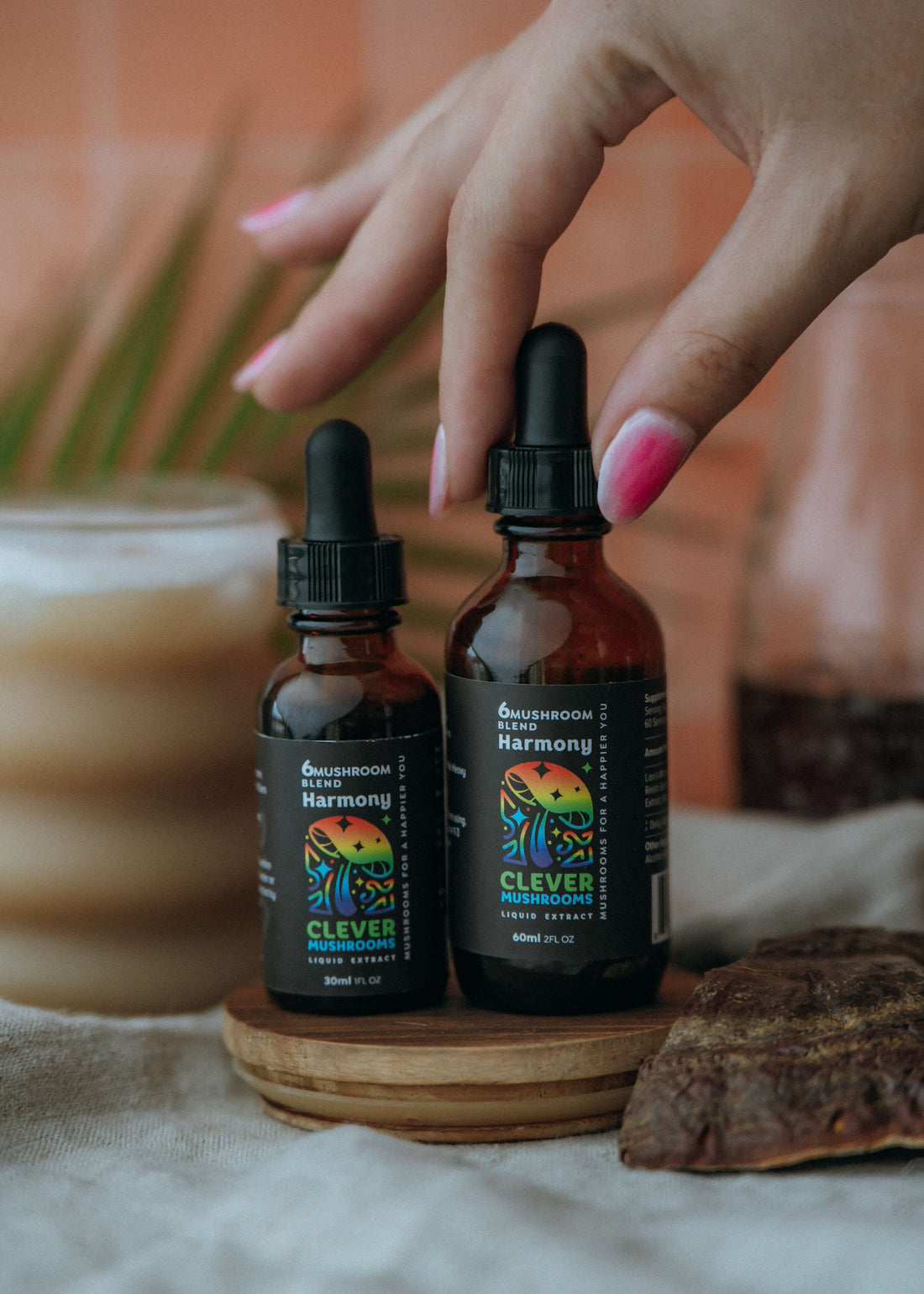
Why 100% Fruiting Body Tinctures Matter: Understanding the Difference
Share
Why 100% Fruiting Body Tinctures Matter: Understanding the Difference
Before investing in a mushroom supplement, it’s crucial to understand that not all products are created equally. In fact, a large portion of products are produced using materials and methods that do not align with the current scientific understanding of medicinal mushrooms.
Shockingly, a 2017 study published in the journal Nature revealed that 75% of Reishi products tested from retail stores in the United States were inconsistent with their labels. Most of these products only contained small quantities of the bioactive compounds attributed to the health benefits of Reishi, and some products didn’t contain them at all!
Unfortunately, supplements like these are poorly regulated and do not follow strict quality guidelines supported by the scientific body of evidence.
This discrepancy in the supplement market can often be attributed to the fact that many supplements do not use 100% fruiting bodies. Instead, many companies use primary materials derived from mushroom mycelium to cut the cost of their production. While this makes for a substantially cheaper product, the quality and therapeutic efficacy are also sacrificed.
What is Mycelium?
Mycelium is the thread-like network of fungal filaments from which mushroom fruiting bodies grow. It’s often compared to the “root network” of a mushroom and can be easily found in decomposing logs or the leaf litter of the forest.
In contrast, mushrooms are the reproductive structure produced by the fungal mycelium. Since the term mushroom is often used ambiguously, the term Mushroom Fruiting Body is used to specify the “above-ground” structures with which we are all familiar. The mushroom-fruiting body is what humans have been consuming as food for millennia and what has been used medicinally for thousands of years by traditional healers.
Why Mycelium Products Do Not Work: Myceliated Grains
The mycelium of medicinal mushrooms is easily cultivated on various natural substrates like sawdust, bran, or grains. This is actually a prerequisite to the cultivation of mushroom-fruiting bodies. Companies have discovered that instead of growing out the mycelium to produce fruiting bodies, it is much cheaper to simply produce mycelium and process it into products.
While mycelium has been shown to contain many health-promoting bioactive compounds, these are scarcely present in the products produced by prominent supplement companies. This is because these products are primarily composed of the substrate on which they are cultivated. Essentially, these grains are not fully transformed into fungal biomass.
Since these products use mycelium cultivated on grains, these materials are often referred to as “Myceliated Grains” or “Mycelium on Grains.”
Mycelium Products Contain Low Quantities Of Bioactive Compounds
When it comes to understanding the therapeutic effect of a product, it all boils down to the quantity of bioactive compounds it contains. Bioactive compounds are those which have been shown by science to have therapeutic and health-promoting effects.
Below is a table displaying some of the most well-known bioactive compounds found in medicinal mushrooms.
|
Medicinal Mushroom |
Bioactive Compounds |
|
Reishi (Ganoderma lucidum) |
Beta-glucans, triterpenoids (ganoderic acids), sterols, peptides |
|
Shiitake (Lentinula edodes) |
Lentinan (beta-glucan), ergosterol (sterol) |
|
Maitake (Grifola frondosa) |
Beta-glucans, ergosterol |
|
Cordyceps (Cordyceps sinensis) |
Cordycepin (nucleoside), beta-glucans, ergosterol |
|
Lion's Mane (Hericium erinaceus) |
Hericenones, erinacines, beta-glucans |
|
Turkey Tail (Trametes versicolor) |
PSK (beta-glucan), PSP (beta-glucan) |
|
Chaga (Inonotus obliquus) |
Betulinic acid (triterpenoid), melanin, beta-glucans |
Most clinical trials and research are conducted on purified extracts containing these bioactive compounds. Few have been done on myceliated substrates, like what is found in many supplements.
Results of NAMMEX Study
An independent study by the company North American Mushroom Extracts (NAMMEX; link here) revealed that mycelium-based products contain meager quantities of bioactive compounds.
-
Beta-glcuans, which are fundamental to the health benefits provided by medicinal mushrooms, were generally found to occur at levels between 1-10%. This is in contrast to fruiting bodies, which contain 30-50% beta-glucan content.
-
Ganoderic Acid, a unique bioactive compound found in Reishi mushrooms, was undetecable in most mycelliated-grain samples.
- Myceliated-grain products contained between 30% and 55% starch. Mushroom fruiting bodies typically only contain between 1-3.5% starches.
Fruiting Bodies Are Rich In Bioactive Compounds
Mushroom fruiting bodies have been used medicinally for thousands of years, predominantly in Traditional Chinese Medicine. They are rich in bioactive compounds and reflect not only what science has shown to be effective, but also these traditional healing practices.
It is for this reason that many herbalists and health practitioners recommend products that only contain 100% fruiting bodies. These products will be effective and provide the many health benefits we seek from medicinal mushrooms.
Generally speaking, if a product doesn’t explicitly mention they are only using fruiting bodies, they are probably not!
Other considerations
Before letting you go, we want to leave you with a couple of other considerations when evaluating a medicinal mushroom supplement.
-
Avoid products that say “Full Spectrum” or “Fruiting Body and Mycelium.” These generally only contain small quantities of mushroom fruiting bodies.
-
Look for products that have been dual extracted. This ensures that both the water and alcohol-soluble compounds are present and well-concentrated in a product.
- We recommend looking for products made with mushrooms grown in the USA. This ensures quality and traceability while supporting local mushroom growers!
